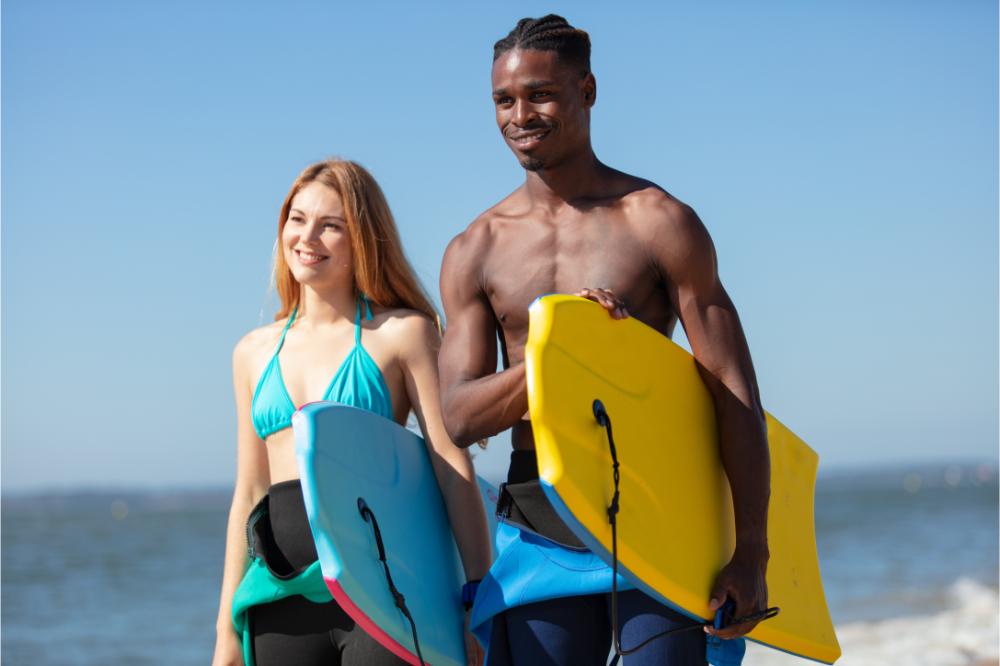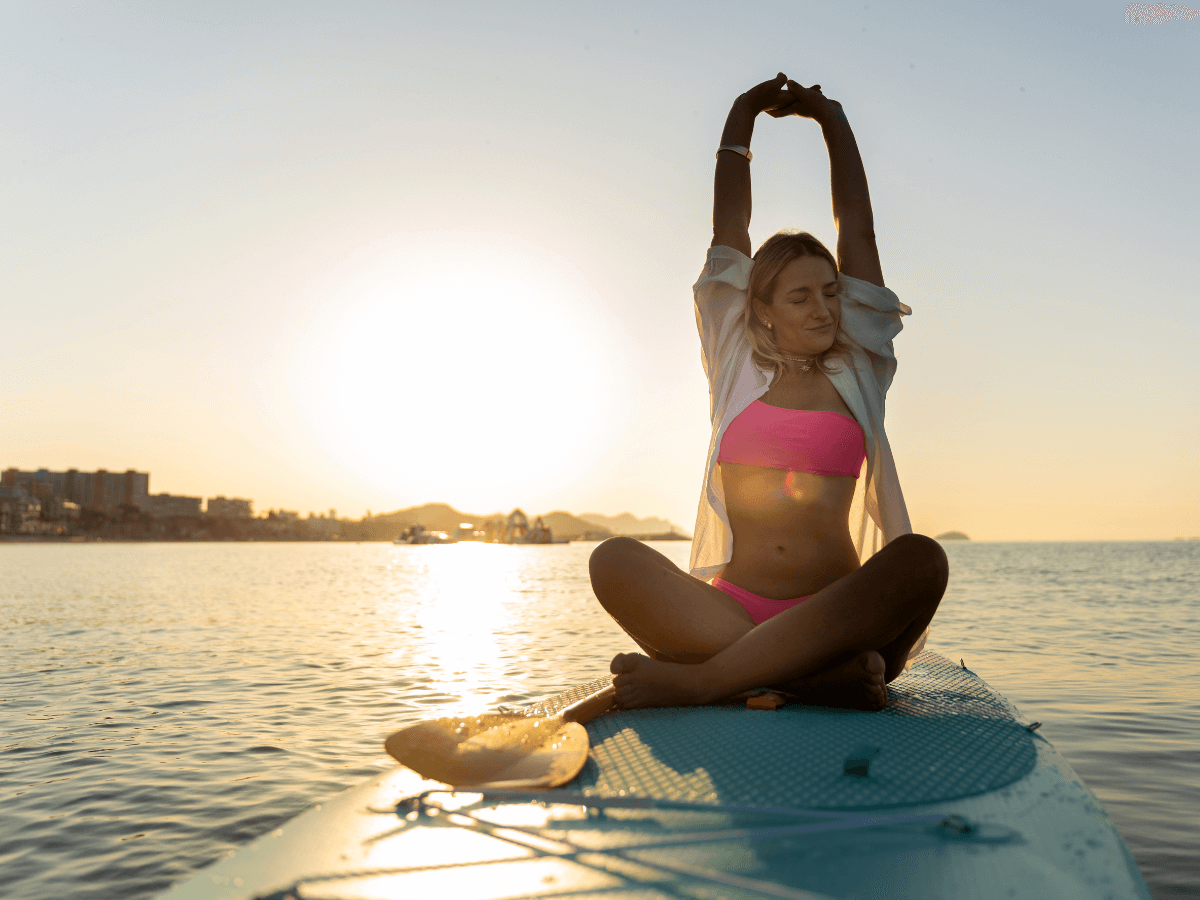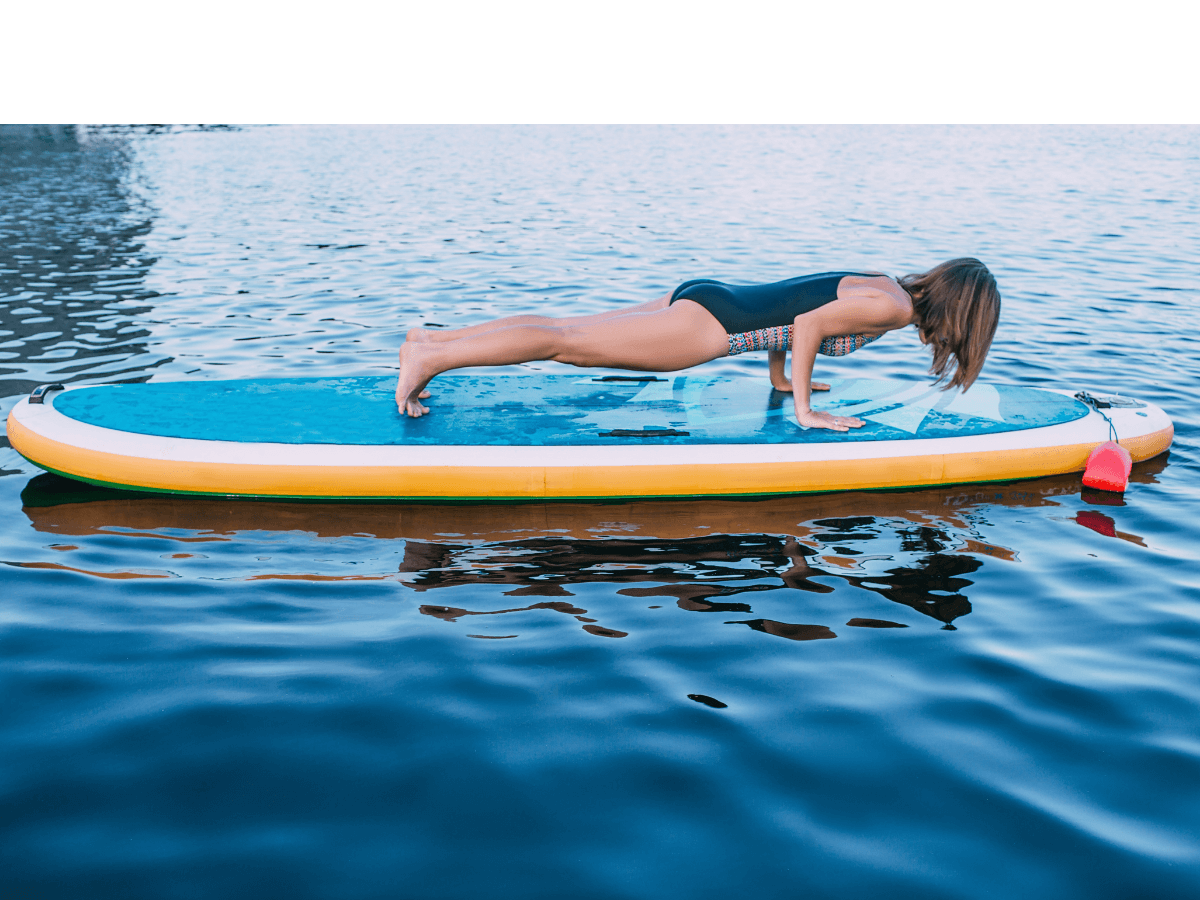Introduction
Welcome to the riveting world of boogie boards! Whether you’re a surf enthusiast looking to get into this offshoot sport, or a seasoned boogie boarder curious about size choices, you’ve come to the right place. When it comes to boogie boards, one size certainly doesn’t fit all, making size a critical factor to consider.
The big question is, should you go for a bigger or smaller board?
While it can be tempting to believe that the bigger the better, or perhaps the smaller, the more thrilling, it’s important to know it’s not that straightforward. The ideal boogie board size depends on your personal preference, skill level, body structure, and the kind of waves you intend to ride.
In this comprehensive guide, we will shed light on everything boogie board sizes, breaking down the pros of larger boards, as well as the advantages smaller boards offer. We’ll also explore various factors you should consider when determining what size is best for you. And, for good measure, we’ll throw in some handy maintenance and care tips to keep your beloved boogie board in top shape.
So, without further ado, let’s dive right in!

Understanding Boogie Boards
To fully grasp the debate between bigger or smaller boogie boards, it’s crucial to dive into the essence of what exactly a boogie board is. Known formally as a bodyboard, the boogie board is a water sports board that’s shorter and less buoyant than a surfboard. Constructed typically from foam, boogie boards allow enthusiasts to ride the ocean waves either lying down or kneeling, unlike surfing where standing is the norm.
It is important to know that there are three main types of core materials, which are used to produce a bodyboard. These are:
PP Bodyboard: PP or Polypropylene is typically the most robust, stiff but also most expensive material used for bodyboards. These types of bodyboards are known for their durability, flexibility, and performance. PP is a type of thermoplastic polymer that is resistant to impacts, which makes it ideal for bodyboarding. Due to the increased stiffness of the material, this type of bodyboard is ideal for warmer water conditions, because in colder water these bodyboards even increase in stiffness.
However, if you want to have a long-term solution for different wave heights, a PP Board is surely the best investment.
PE Bodyboard: PE or Polyethylene Bodyboard is known for its flexibility and control. Thus, they are generally more suited for cooler water temperatures.PE is a type of plastic that is used in many types of products, including bodyboards. These types of boards offer a great balance of performance, durability, and price, making it a popular choice among bodyboarders.
EPS Bodyboard: EPS or Expanded Polystyrene Foam Bodyboards are lightweight, making them easy to handle, especially for beginners. They are less rigid as compared to PP or PE boards, making them more forgiving and easier to manoeuvre in the water. However, they may not perform as well in bigger, more powerful waves as they tend to flex more and are less durable and robust. EPS boards are typically less expensive and ideal for beginners or those on a budget.
Now, let’s talk about size. Boogie board sizes can range anywhere from 32 inches to 45 inches and up. The size can play a significant role in your riding style, speed, and control. Smaller sizes tend to enhance maneuverability while larger sizes are known for their stability. Therefore, the choice hinges upon personal preferences, skills, and body type.
The most important factor however is your own size and weight. The reason behind that is, that the smaller a board is, the buoyant the board.
When choosing the size of your boogie board, you have to use your height and weight as a standard reference. For instance, shorter individuals or children need smaller boards, a too-large board is uncomfortable to handle. On the other hand, taller or heavier riders need to have a bigger board; otherwise, they will never be able to pick up enough speed to enter a wave.
So always start with a bodyboard-size table like the one we provide here.
Though the Size Chart is comprehensive, it nevertheless provides only a rough estimate of the ideal size for individuals. It gives a recommended range for your board’s size.
The tips below will guide you in determining whether to opt for the maximum or minimum size within the suggested sizes.

The Pros of Bigger Boogie Boards
As we’ve been diving into the bells and whistles of boogie boards, it’s time to kickstart our exploration of sizes, starting with the larger variants. The question that piques interest here is – what exactly makes bigger boogie boards worth considering?
First off, bigger boogie boards provide superior buoyancy and stability than their smaller counterparts. This makes them ideal for beginners, as they enable easier balance and offer a seamless learning curve. As a beginner, stability is paramount in mastering the skill of riding the waves. Keeping a good balance is somewhat tricky, but bigger boards simplify the challenge by providing a larger surface area, hence a more stable riding experience.
Additionally, broader boards also give riders the added advantage of catching waves much easier than smaller boards. The better the board floats, the easier it is to catch a wave before it breaks, making the surfing window broader, thus making the surfing experience more relaxed and enjoyable.
Bigger boogie boards are more stable and can provide a smoother ride in rough waters. Their size gives them a higher buoyancy, allowing them to support heavier riders. Even though they are slower, larger boogie boards are often preferred for their stability, especially for beginners or those using them in smaller wave conditions.
These are just some of the fantastic benefits that bigger boogie boards bring to the table, regardless of the surfer’s experience level – although they seem especially appealing to beginners or those who are looking for more steadiness underfoot.
Ultimately however, as we will discuss in the next section, the choice between a larger or smaller board will depend on a variety of factors, including your skill level and individual preferences.
The Benefits of Smaller Boogie Boards
While larger boogie boards have their merits, their smaller counterparts also bring a slew of advantages to the surfing experience. If you are pondering which boogie board size to pick, it’s worthwhile to consider what smaller boogie boards can offer.
To kick things off, smaller boogie boards boast of a greater level of manoeuvrability. It’s akin to driving a sports car versus a pickup truck; the sports car can turn on a dime and navigate tight corners much easier than the truck. The same goes for boogie boards. A smaller board allows the rider to make quick turns and adjustments, a skill crucial for navigating through crowded beaches or dealing with unpredictable waves.
Small boards are also typically easier to control. A smaller board is generally more responsive when up to speed, allowing the rider to adjust their approach by shifting their weight or positioning more effectively. So if you are already a little more experienced and have some routine on how to efficiently catch a wave, you should start thinking about choosing a smaller board. You will love the improved manoeuvrability and responsiveness. It will especially make it easier to learn your first tricks.
Another benefit, often overlooked, is how much less space a smaller boogie board takes up–both during transit and storage. Whether it’s in the trunk of your car, fastened on your bike, or stored away in your garage, a smaller boogie board won’t call for a massive footprint that larger boards might demand.
All in all, smaller boogie boards can offer remarkable benefits in terms of manoeuvrability and control.
Factors to Consider
When deciding on the perfect boogie board size, various factors need your attention. Everyone is unique, and what works for one person may not work for another. So, before you head out and grab the first boogie board you see, let’s discuss some aspects you should bear in mind to get the board that best fits you.
Your size, skill level, and your intended use for the board are all primary considerations.
Your Size and Weight:
In terms of size, generally, the rule of thumb is that the board’s length should reach from your knees to your chin when standing up against you vertically. Heavier or taller users tend to lean towards larger boards for extra floatation, and shorter or lighter users often opt for smaller boards due to easier manoeuvrability.
Another important factor is your personal “Size to Weight” ratio. This means: that if you are heavy for your size (high BMI), you should better opt for a larger board (see also the size chart in How to choose the right Bodyboard & Bodyboard Chart (coolwatersports.com) as you need the additional buoyancy. On the other side, if you are a very thin person (Large “size to weight” or low BMI) then you can choose a smaller board of the size chart. However, don’t choose a board too small, as your body still causes a lot of water drag. So the board should still reach approximately to your belly button when placed upright on the floor in front of you.
Your Skill Level:
The next factor to consider is your skill level. Are you a beginner or a seasoned pro? Beginner boogie boarders might find a larger board more stable and forgiving, helping them gain confidence in the water. On the contrary, an advanced user might prefer a smaller board for its performance and turning capabilities. It’s not set in stone, though. Choose the size that feels comfortable and exciting to you.
Type of Waves
The type of waves you’ll be riding and the style of riding you prefer should be your next considerations. If you’re lucky enough to shred some big, powerful waves then a smaller board, known for their speed and stability, might be your best bet. In intermediate-size waves, it more depends on your personal preference: if you need speed, choose a larger board. If you want to do some tricks and need more manoeuvrability, opt for a smaller board for your size. However, if it’s playful, smaller waves that tickle your fancy, a larger board will offer everything you need.
Furthermore, include a table showing the influential factors and if they lead more to a smaller or larger board.
E.g.:
| Small Board | Large Board | ||
| Beginner Level | X | ||
| Intermediate Level | X | X | |
| Expert Level | X | ||
| Small Waves | X | ||
| Intermediate Waves | X | X | |
| Large Waves | X | ||
| Small Size to Weight ratio (high BMI) | X | ||
| Normal Size to Weight ratio | X | X | |
| Large Size to Weight ratio (low BMI) | X |
So, don’t be limited by convention or peer pressure. The best boogie board size for you depends on who you are, your skills, your style, and your preference. Happy boarding!
Real-World Scenarios
Now let’s talk about some real-life scenarios to give you a better understanding of which boogie board size is more suitable according to different conditions.
The appropriate size of the boogie board typically depends on the rider’s size, skill level, and the wave conditions.
Here’s a quick guide:
1. Rider’s Height and Weight: Your boogie board should reach from your knees to your chin when standing up on its end. For average-sized adults, this usually means a board between 39” and 43”. Heavier riders may need a wider board, while lighter riders can go with something narrower.
- Weight up to 65 lbs – Boards should be 33 to 37 inches
- Weight 65 lbs to 85 lbs – Boards should be 37 to 41 inches
- Weight 85 lbs to 105 lbs – Boards should be 41 to 42 inches
- Weight 105 lbs to 130 lbs – Boards should be 42 to 43 inches
- Weight 130 lbs to 160 lbs – Boards should be 43 to 44 inches
- Weight 160 lbs to 190 lbs – Boards should be 44 to 45 inches
- Weight 190 lbs and up – Boards should be 45 to 46 inches
2. Wave Conditions: Larger boards are generally better for small, weak waves as they can catch waves more easily and maintain speed. Smaller boards, on the other hand, are more suited for larger, powerful waves where control and manoeuvrability are key.
3. Skill Level: Beginners might benefit from a larger board as it would offer more stability and floatation. As the rider’s skills progress, they may opt for a smaller board for greater manoeuvrability and tricks.
Remember, this is just a general guide and comfort should also be a determining factor while choosing the size of your boogie board. Personal preference does come into play.
To sum up, while boogie board size is largely a matter of personal preference and the kind of waves you intend to ride, there are situations where one size might be preferable over the other. Taking these real-world scenarios into consideration can help you decide which boogie board size is the right fit for you!
Tips for Maintenance and Care
Keeping your boogie board in good condition regardless of its size is crucial if you want it to last.
But maintaining you bodyboard is not only crucial for its durability. A well-maintained board also helps that the board keeps it performance, especially its speed!
Firstly, it’s crucial to rinse your board with fresh water after every use. Beach water, whether it’s lake or sea, contains minerals and salts that can erode the board’s material over time. Therefore, washing it off helps remove these potentially damaging substances.
Another important tip is to store your board out of direct sunlight when it’s not in use. Both the heat and UV light from the sun can degrade the materials and cause them to warp or crack. A cool, shaded spot like a garage or under a porch works just fine for storage.
Also, avoid dragging your board over rough surfaces. This sort of pressure can inevitably leave gashes, scratches or even lead to delamination. If your board has a leash, ensure it’s removed before storage as this can put unnecessary strain on the board.
Lastly, maintenance isn’t just about cleaning and storage. Regularly inspecting your board for any signs of damage is a good practice. If you notice any dings or cracks, tend to them immediately. Leaving them unattended can cause them to worsen and shorten the lifespan of the board.
To sum it up, an adequately cared-for boogie board, regardless of its size, will always outlast an ill-maintained one. So, along with selecting the right-sized board, also focus on maintaining its health.
Conclusion
In summary, the size of your boogie board should align with your body structure, skills, and the type of waves you’ll be riding. Both small and large boogie boards come with unique benefits, and understanding these can truly improve your experience in the water.
Having a clear idea about the type of riding you seek will make your choice easier. These criteria, along with proper maintenance and care, play a vital role in using boogie boards effectively. Whether you opt for a small or large one, the ultimate goal is to carry on the boogie boarding tradition—having thrilling fun on the water’s surface!






